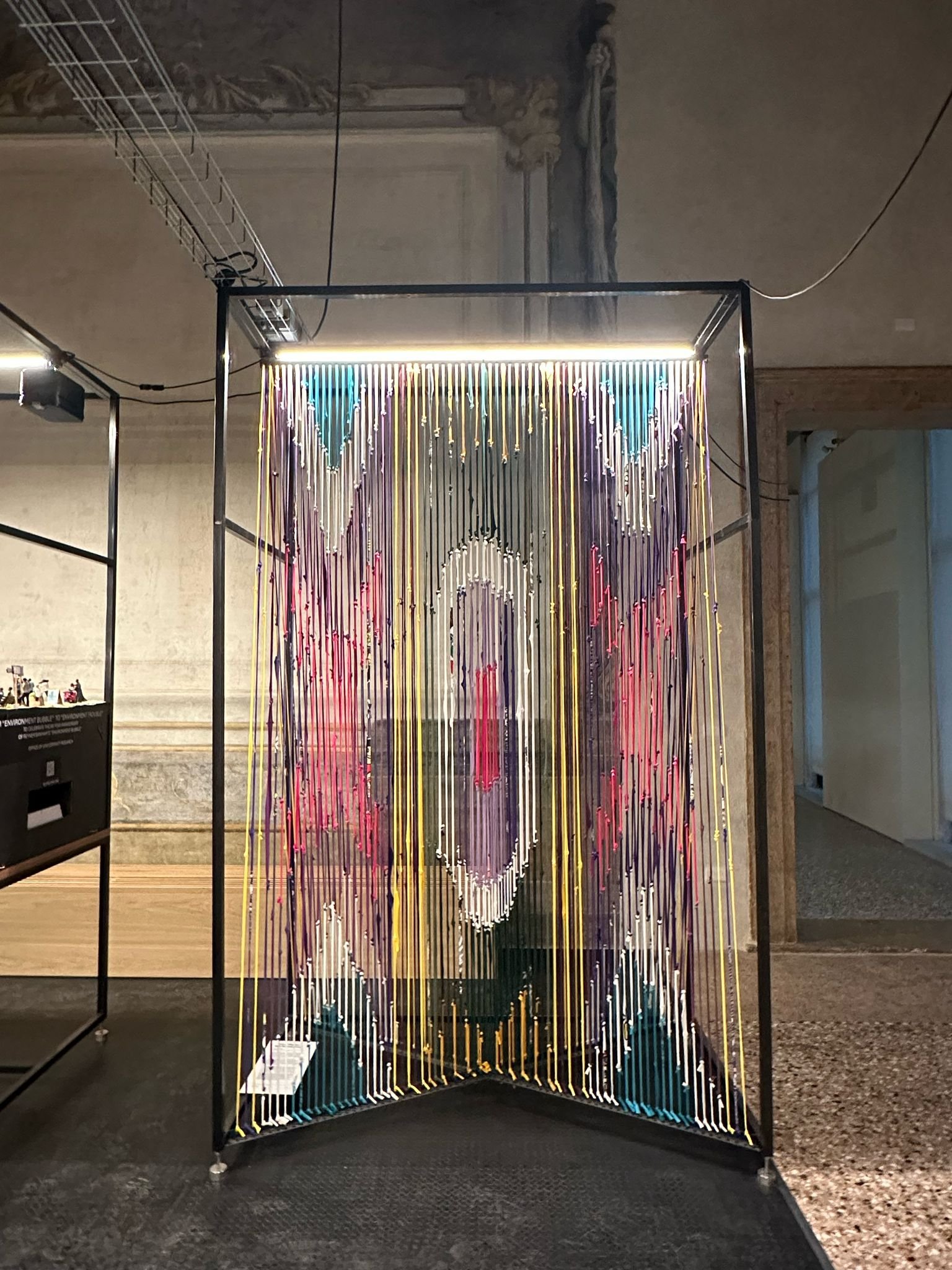Weft of Waste – Ikat Reimagined transforms discarded fast fashion into an artistic meditation on consumption, craft, and cultural memory. Comissioned for the Berggruen Arts & Culture Center's exhibition The Next Earth: Computation, Crisis, Cosmology—a collateral event of the 2025 Venice Biennale Architettura—this installation reimagines the rich visual language of Uzbek ikat weaving through the lens of contemporary waste. The project creates a colorful loom constructed from shredded cotton T-shirts, each representing the staggering 2,700 liters of water required for a single shirt's production, making visible the hidden environmental costs of the global textile industry.
Through this material transformation, Weft of Waste functions simultaneously as an artifact and an argument, critiquing unsustainable fashion cycles while honoring artisanal practices that predate industrial manufacturing. The installation's patterns echo the characteristic blurred motifs of traditional ikat, positioning craft as resistance against environmental degradation and cultural erasure. By weaving together discarded materials using ancient techniques, the project reimagines waste not as an endpoint but as the beginning of new cultural narratives. This regenerative approach challenges viewers to reconsider their relationship with consumption while offering a vision where heritage and innovation intersect to inspire more sustainable practices, reconfiguration, and repair.
Installaition
Commissioned for the Berggruen Arts & Culture Center's exhibition The Next Earth: Computation, Crisis, Cosmology—a collateral event of the 2025 Venice Biennale Architettura
May 11 – November 23, 2025
Materials: 30 cotton T-shirts, steel frame
Dimensions: 170 x 96 x 280 cm
Credits:
Artistic direction: Azra Aksamija.
Project development and fabrication: Kailin Jones and Lillian Kology.
Photos: Calvin Zhong, Lillian Kology.












